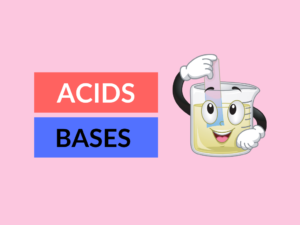Difference between Depolarization and Repolarization
Introduction:
Depolarization and repolarization are two important processes that occur in various biological systems. Understanding the differences between these two phenomena is crucial in fields like neurobiology, cardiology, and muscle physiology. In this article, we will explore what depolarization and repolarization are, provide examples, discuss their uses, and highlight the key differences between them.
What is depolarization?
Depolarization refers to the change in a cell’s membrane potential where the inside of the cell becomes less negative relative to the outside. This occurs when the cell’s voltage-gated ion channels open, allowing positively charged ions, such as sodium (Na+), to rush into the cell.
Examples of depolarization:
- Neuronal Action Potential: During the propagation of an action potential, the depolarization phase occurs when the voltage-gated sodium channels open, causing an influx of sodium ions into the neuron.
- Cardiac Muscle Contraction: In the heart, depolarization occurs during the excitation-contraction coupling, triggering the release of calcium ions to initiate muscle contraction.
- Skeletal Muscle Activation: When a motor neuron stimulates a skeletal muscle fiber, depolarization occurs, leading to the release of calcium ions, which enable muscle contraction.
Uses of depolarization:
Depolarization plays a crucial role in various physiological processes, including communication between neurons, muscle contraction, and cardiac function. It allows the transmission of electrical signals, enables muscle activation, and ensures proper cardiac rhythm and pumping.
What is repolarization?
Repolarization is the return of a cell’s membrane potential to its resting state after depolarization. It involves the closing of voltage-gated ion channels and the movement of ions to reestablish the negative internal charge.
Examples of repolarization:
- Neuronal Action Potential: Repolarization occurs as the voltage-gated potassium channels open and potassium ions (K+) leave the cell, restoring the negative charge.
- Cardiac Muscle Relaxation: Repolarization of cardiac muscle allows the heart to relax and refill with blood, preparing it for the next contraction.
- Skeletal Muscle Relaxation: After depolarization and contraction, repolarization occurs in skeletal muscle, enabling relaxation of the muscle fibers.
Uses of repolarization:
Repolarization is crucial for the proper functioning of cells and tissues. It ensures that cells have a refractory period, allowing for sequential firing of action potentials and preventing sustained contractions. In the heart, repolarization allows for proper diastole and cardiac cycle.
Differences between depolarization and repolarization:
| Difference Area | Depolarization | Repolarization |
|---|---|---|
| Membrane Potential Change | The inside of the cell becomes less negative relative to the outside. | The cell returns to its resting potential, becoming more negative inside. |
| Ion Movement | Positively charged ions (e.g., Na+) move into the cell. | Positively charged ions (e.g., K+) move out of the cell. |
| Voltage-Gated Channels | Depolarization involves the opening of voltage-gated sodium channels. | Repolarization involves the opening of voltage-gated potassium channels. |
| Cellular States | Depolarization leads to excitation and activation of cells. | Repolarization allows for relaxation and recovery of cells. |
| Neuronal Signaling | Depolarization initiates the propagation of action potentials. | Repolarization allows for sequential firing of action potentials. |
| Cardiac Function | Depolarization triggers cardiac muscle contraction (systole). | Repolarization allows for cardiac muscle relaxation (diastole). |
| Skeletal Muscle | Depolarization enables skeletal muscle activation. | Repolarization facilitates skeletal muscle relaxation. |
| Ion Movements | Sodium ions move into the cell during depolarization. | Potassium ions move out of the cell during repolarization. |
| Duration | Depolarization is a relatively short-duration event. | Repolarization may take longer compared to depolarization. |
| Electrical Activity | Depolarization represents the depolarizing phase in an action potential. | Repolarization represents the repolarization and hyperpolarization phases in an action potential. |
Conclusion:
In summary, depolarization and repolarization are two crucial processes that occur in various biological systems. Depolarization involves the inward movement of positive ions, leading to cell activation, while repolarization is the outward movement of positive ions, allowing cells to relax and recover. Understanding these differences is essential for comprehending the physiological mechanisms underlying cellular and tissue function.
Knowledge Check:
- Which process involves the opening of voltage-gated sodium channels?
a) Depolarization
b) Repolarization
Answer: a) Depolarization - What ion moves out of the cell during repolarization?
a) Sodium (Na+)
b) Potassium (K+)
Answer: b) Potassium (K+) - What is the role of repolarization in cardiac function?
a) It initiates cardiac muscle contraction.
b) It allows for cardiac muscle relaxation.
Answer: b) It allows for cardiac muscle relaxation. - Depolarization enables which process in skeletal muscle?
a) Muscle activation
b) Muscle relaxation
Answer: a) Muscle activation - Which process follows depolarization in an action potential?
a) Resting potential
b) Hyperpolarization
Answer: b) Hyperpolarization - Fill in the blank: Depolarization causes the inside of the cell to become _________ relative to the outside.
a) More positive
b) More negative
Answer: a) More positive - Which ion moves into the cell during repolarization?
a) Calcium (Ca2+)
b) Sodium (Na+)
Answer: b) Sodium (Na+) - Repolarization allows for the sequential firing of action potentials. (True/False)
Answer: True - Depolarization plays a role in muscle relaxation. (True/False)
Answer: False - Which process represents repolarization and hyperpolarization phases in an action potential?
a) Depolarization
b) Repolarization
Answer: b) Repolarization
Related Topics:
- The Role of Ion Channels in Cellular Signaling
- Understanding Action Potentials in Neurons
- Cardiac Electrophysiology and Arrhythmias
- Muscle Contraction Mechanisms in Physiology


